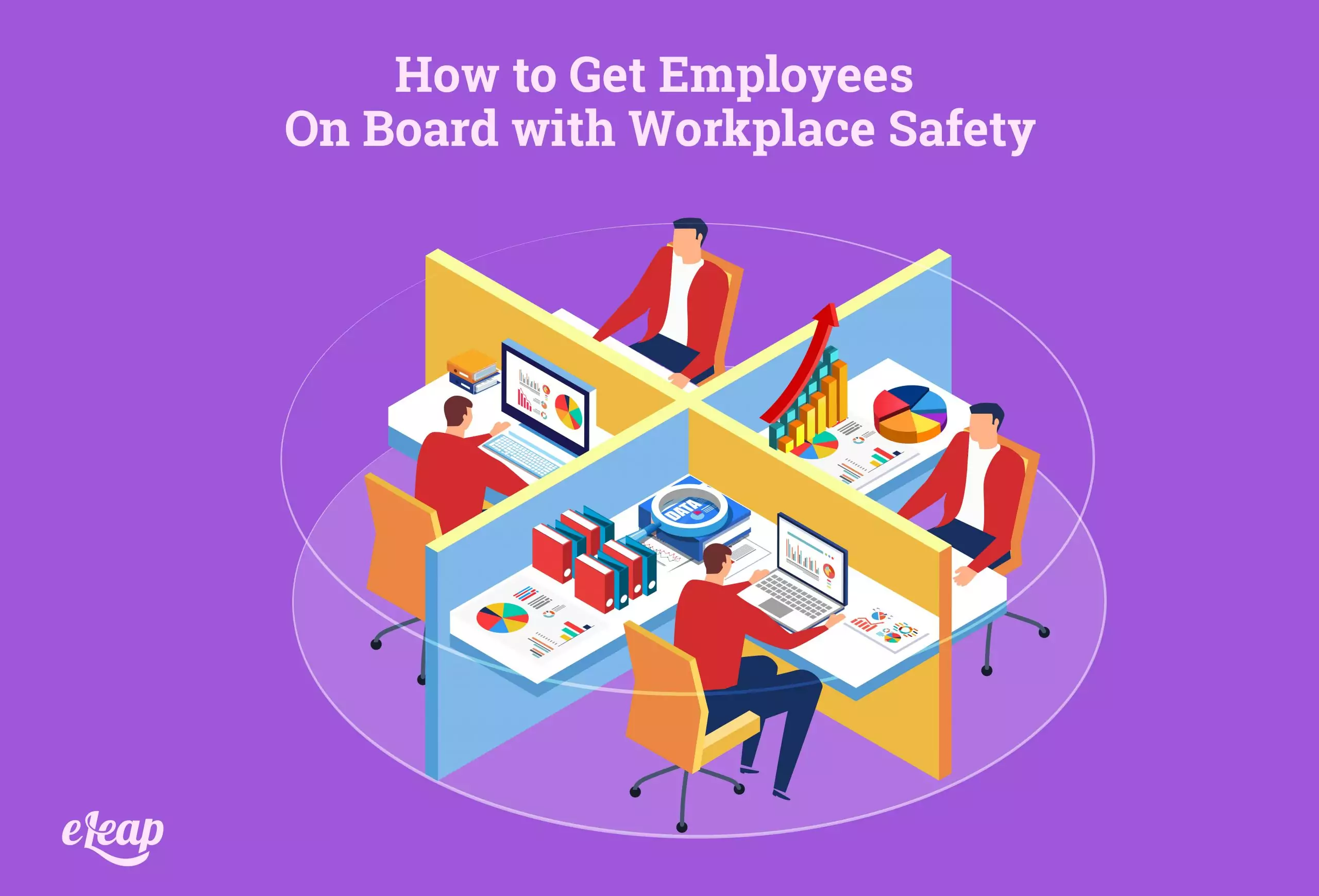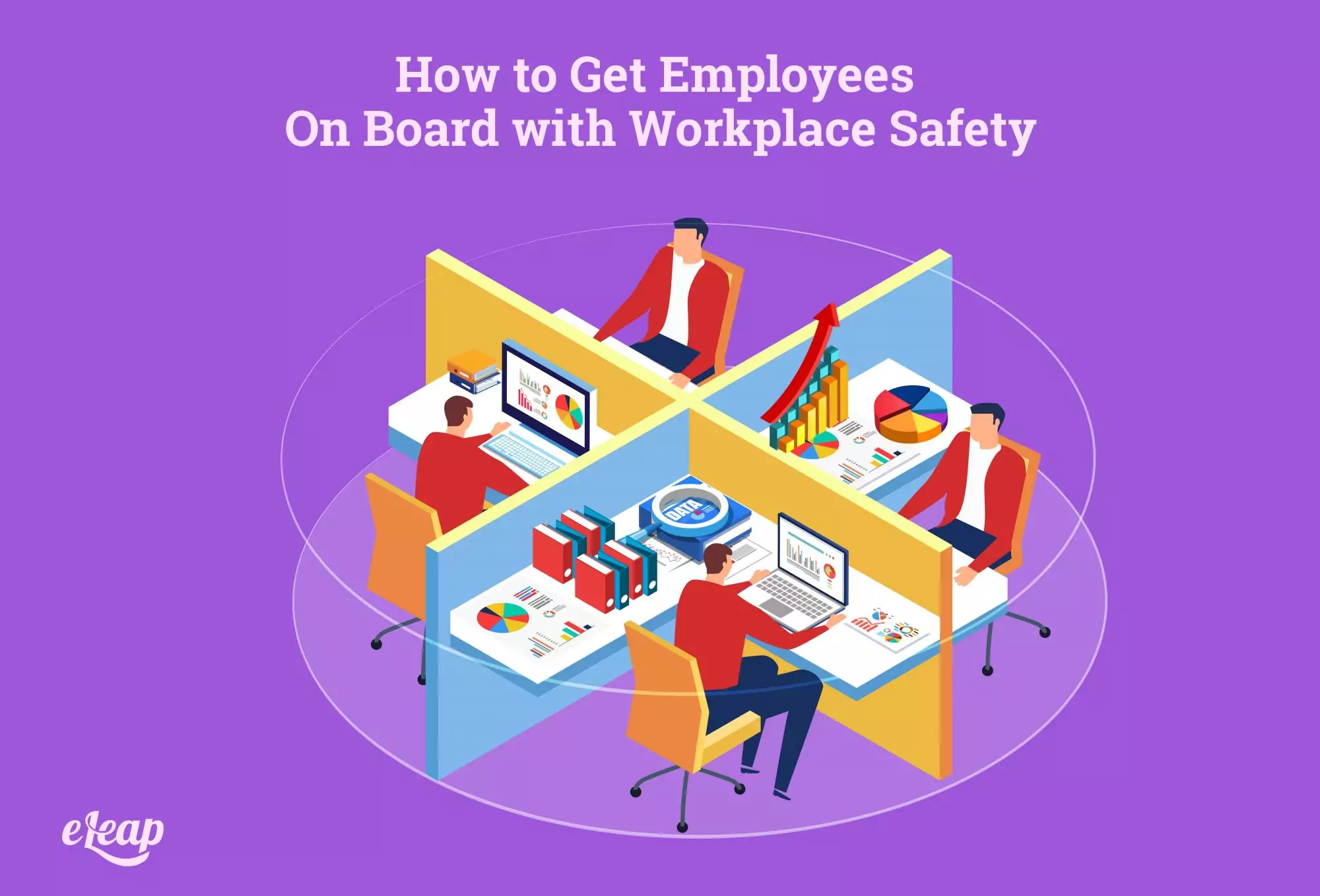How to Get Employees On Board with Workplace Safety

Struggling to get your employees on board with workplace safety? Whether they fail to wear the required PPE, continually clutter up their workspace, fail to store chemicals safely, or something else, it all adds up to big compliance problems. That’s not just a black mark against your company – it means major risks for your employees and the business as a whole.
Getting your employees on board with workplace safety is incredibly important, but it can be just as challenging. The good news is that it is possible to achieve this goal, but it will require effort and strategy on your part. In this article, we will explore crucial elements of that strategy and the role they play in the process.

Training, Training, Training
One key to getting employees on board with training is training. A strong training program is a base for all your other efforts. Without this in place, other elements will fall short, so make sure that you have this down before attempting anything else. You’ll also find that this is a requirement with OSHA and other regulatory agencies, so compliance is impossible without a robust training program.
With a modern LMS, you can deliver effective training while still allowing your employees to do their jobs. Cloud technology offers agility and flexibility, as well as the opportunity to deliver training in bite-sized chunks that are easier for your learners to absorb and retain. It is also important to realize that your training is not just about informing – it is the bridge between the theory behind safety regulations and putting those into practice in the real world.
It is also important to realize that your training program needs to change and evolve over time. The only way to do that is to continually assess the system and balance it against industry rules, government regulations, and best practices. This ensures that your system grows organically and that it continually delivers an optimum experience that’s in line with your employees’ on-the-job reality. (download free 8 Safety Blind Spots eBook)
Policies and Repercussions
Training is just the first step in getting your employees on board with workplace safety. You also need to codify safety policies and then communicate those to your employees. Ideally, those policies can be worked into the training material. However, they should also be available in hardcopy for your employees, and they should also be communicated in other ways, including:
- Manager to employee
- Employee to employee
- Covered in meetings
- Available in digital knowledge bases
Your policies and procedures should spell out everything employees need to know regarding safety and best practices. However, you also need to develop disciplinary steps for workers (or even entire teams) that disregard or fail to meet safety standards. When developing this system, ask yourself the following questions:
- What should occur with a first, second and third infraction?
- What limit will you place on safety infractions?
Remember that your policies should not punish employees for reporting safety infractions. Also, remember that they must be applicable evenly across the board and that the repercussions should ultimately include termination in the case of flagrant disregard for safety.
Get Buy-In
It is impossible to get your employees on board with workplace safety without getting leadership involved. In some cases, this can be as challenging as getting buy-in from employees, though. To do this, you will need an advocate or champion within the organization’s leadership. This individual should be responsible for all advocacy and awareness-related activities, particularly as they relate to leadership and management.
Getting management and leadership involved is critically important, though. The attitudes they consciously and unconsciously communicate form employee opinions and decisions. Simply put, if leaders don’t take safety training seriously, neither will those they lead.
Communicating the safety message to leadership can be challenging, but using two specific methods will help. The first is the compliance message – make sure that the C suite understands the repercussions of non-compliance with OSHA regulations. It is also important to communicate the cost involved, including worker’s compensation payments, damage to your reputation, and more.
Involve Employees
Get your employees involved in the safety process. You should have employees as part of the safety committee, but you should also actively solicit their feedback regarding safety-related issues around the workplace. This could involve suggestions for how to avoid safety-related problems, incentives to improve safety, and more.
Another idea is to have employees conduct their own daily safety inspections of their workstations and the surrounding area. This makes safety personal, but also builds it into the regular routine, thereby increasing its relevance and visibility. The point is that the more involved your employees are, the more on board they will be with related initiatives.
Hold Them Accountable
Workplace safety is a group effort. Individuals are accountable for their failure to live up to expectations. This should tie into your disciplinary policies. Note that accountability should be as public as possible to drive home the ramifications of failing to uphold individual safety-related responsibilities.
Decisive Steps Lead to Positive Results
Workplace safety is of paramount importance. It affects your employees’ health and security, your company’s bottom line, and legal compliance. It can lead to serious problems in that area if you fail to comply with rules and regulations.
For all that, workplace safety does not have to be an incredible challenge. With the right planning, an understanding of how safety affects everyone within the organization, business itself, and the right tools, it is possible to get your employees on board with your strategy. One of the most important tools is your learning management system (LMS). A modern LMS can be the cornerstone of your education and training activities, can help employees understand the specific regulations, and will even help them learn more about the repercussions of failing to uphold safety-related responsibilities. Contact eLeap for more information about our cloud-based LMS and how it can help your organization.